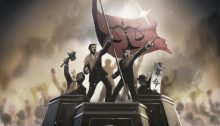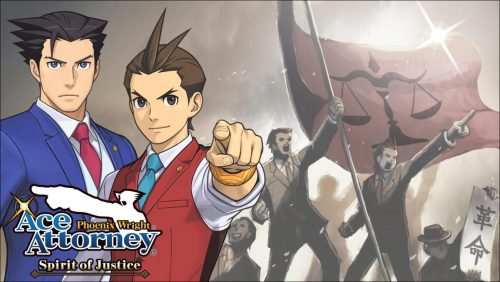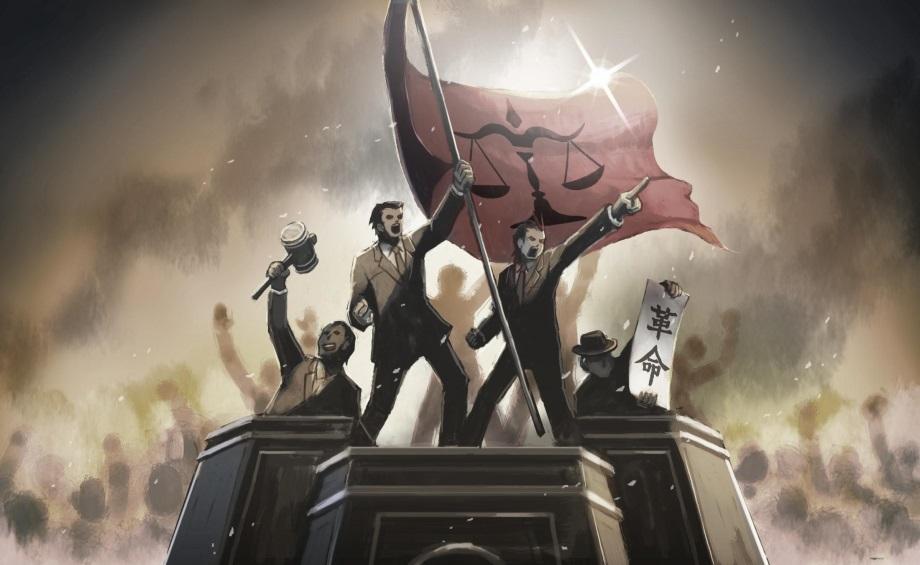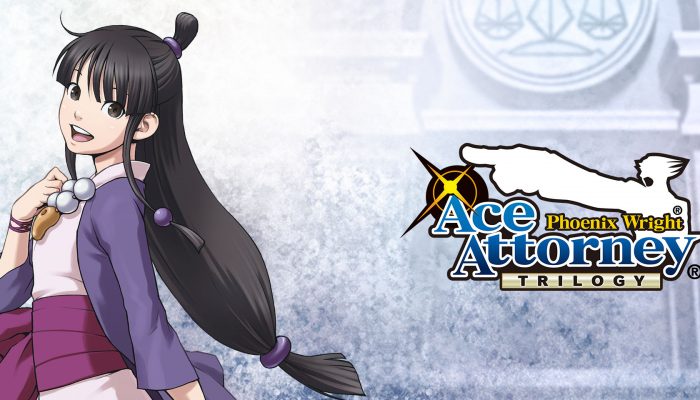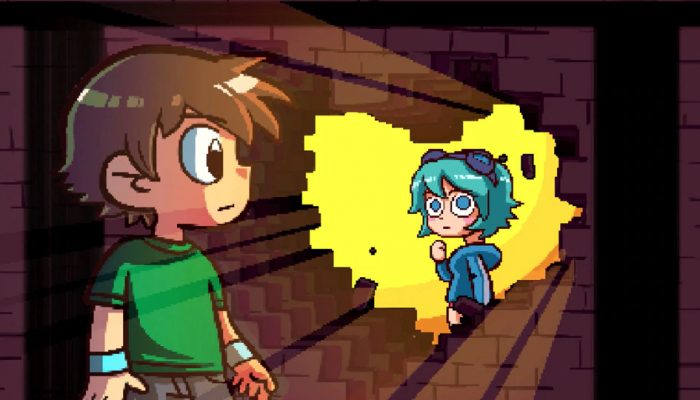 It’s time for a revolution.
It’s time for a revolution.
☆ NintendObs Weekly – Monday, August 15, 2016 – Sunday, August 21, 2016.
Conceptualizing and Writing the Heart of Phoenix Wright: Ace Attorney – Spirit of Justice
AUG 12
Hello again to long-time Ace Attorney fans, and nice to meet you to new folk who have just joined us on our outrageous legal adventure! I’m Janet Hsu, localization director of Phoenix Wright: Ace Attorney – Spirit of Justice.
Is everyone having a great 10th anniversary year of Ace Attorney?! It’s hard to believe that the first game was released almost 11 years ago now in the west, but here we are! In fact, we’ve actually caught up to the events of the first game’s timeline – *gasp* the future is now!
Is anyone replaying the games in real time? If so, then you know there’s a nice gap right between episodes 2 and 3 of the first game to slot in a playthrough of Phoenix Wright: Ace Attorney – Spirit of Justice, which is coming out on September 8th! I, for one, am looking forward to non-stop Ace Attorney fun through the end of the year.
Speaking of Spirit of Justice, well, I’m sure you can guess why I’m back blogging on Capcom Unity. Yup, it’s time for dev and loc blogs once again! So now, without further ado, I bring you the first in a number of installments in which we’ll explore the various facets of how we, the development team and the localization team, created a little game called Phoenix Wright: Ace Attorney – Spirit of Justice.
At the heart of every Ace Attorney are the strong stories and characters that keep you playing until you’ve gathered every piece of evidence and unraveled every mystery. So naturally, the director Mr. Yamazaki and one of our writers, Mr. Fukuda, would have the best insight into how the story of each episode and the game as a whole was put together. So, take it away, Mr. Yamazaki!
The Theme of Phoenix Wright: Ace Attorney – Spirit of Justice
Hello and hap’piraki everyone! This is the director of Ace Attorney: Spirit of Justice, Takeshi Yamazaki. (Hap’piraki is a standard Khura’inese greeting.) I’m here today to talk a little about the main theme of this game.
When work started on AA: SoJ, my very first order of business was to decide on a theme, because we certainly wouldn’t have gotten very far without one. The theme of the previous game, Ace Attorney: Dual Destinies, was the destruction of the court. Based on this key concept, we wrote about the dark age of the law, the literal bombing of a courthouse, and even a prosecutor who was also a convicted felon. Thanks to all of these impactful elements, the then-newest mainline entry was able to captivate people anew after a long, seven-year hiatus for the series.
And then, it came time to make its sequel – this game.
Like any long-running series, Ace Attorney lives or dies by each game’s ability to go beyond its predecessor. The same is true for the themes of each game. This meant that the core concept for AA:SoJ had to be even more impressive than the destruction of the legal system itself! Like Apollo and his Chords of Steel exercises, I found myself yelling, “HOW THE HECK AM I SUPPOSED TO PULL THIS OFF?!” at the top of my lungs as I sat there at my desk, trying to come up as many ideas as I could to overcome this giant wall in front of me.
“The birth of a court system!” “The evolution of a court system!” “The incineration of a court system!” “An ancient court!” “An underwater court!” “A space court!
”No, no, no! What I needed was a catchier, more impactful key concept – something no one had ever done before. I was lamenting to myself with my head in my hands when Mr. Eshiro, the producer, came over to me with a giant grin on his face.
Eshiro: Hey, you still stuck on the game’s theme? Let’s see what you’ve got already. ………Ugh! What the heck are these?
Yamazaki: Sorry… I’m trying my best, but nothing’s coming to me.
Eshiro: Man, I guess this is about all the talent you’ve got, huh? Well, I never expected much from you to begin with anyway. So what now? You gonna give up? There’s loads of other people who can take over for you, you know. *big grin*
Yamazaki: (C-C-Curse you, old man!!!)
That’s Mr. Eshiro for you: a producer who’s willing to abuse his power to bully and oppress his own team members. I wanted to yell at him – to tell him how I’ll never forgive him for treating us like beasts of burden. In my head, I was screaming, “I can’t take this anymore! I have to do something! I’m gonna revolt against this tyranny!!! …Wait, revolt…? Revolution…?”
And that’s how I hit on the theme of “courtroom revolution” for AA: SoJ.
…Just kidding. But this is more or less how Mr. Eshiro and I are with each other for real. And actually, I did come up with a bunch of duds while I was brainstorming my head off. The important thing is to not give up and keep working at it until a truly good idea comes to you.
Now, then. Once I had my key phrase of “courtroom revolution,” I quickly presented it to Mr. Eshiro, who quickly approved it with a, “That’s the one!” Riding high on the approval I’d received, I presented my idea to the rest of the team. I gathered everyone in one of the company’s meeting rooms and announced from on high:
Yamazaki: This game’s theme will be “courtroom revolution”!
Team Members: ………What?
Everyone stared at me, agape, and I could see a giant question mark floating over each of their heads. A suffocating silence hung over that meeting room for a few moments before everyone simultaneously burst into question after question for me.
“I don’t see how trials and revolution are related…”
“But the idea of ‘revolution’ isn’t something a Japanese person will readily get.”
“What in the world would undergo a revolution in the first place?”
The only answer I had for all of their concerns was:
Yamazaki: I don’t know yet. That’s what I have to figure out!
“You talentless hack! I’ll revolutionize your face!” one of the team members yelled as the lot of them knocked me onto my back and beat me to a pulp. My face swelled with the punches it received until I looked like a completely different person.
…Just kidding. But that’s more or less how the team and I are with each other for real. And actually, I didn’t just randomly pick “courtroom revolution” as the theme. I did have my reasons, and I did properly explain them to the rest of the team, who were then on board with the idea, too.
At its heart, the concept of “revolution” is all about a weaker group’s struggle to overthrow their stronger oppressors, which implies a turning of the tables. Therefore, a revolution is basically one really gigantic turnabout – a theme that serves as the foundation of this series. It’s the very reason Ace Attorney stories and gameplay are so fun and interesting in the first place!
So, you see, I really did put a lot of thought into it.
Even still, just because we now had a theme didn’t mean I had any concrete idea of what the game was going to be about, and so, the long struggle of figuring out how to turn the phrase “courtroom revolution” into an actual story began.
What does it mean to revolutionize a court system?! What exactly would Phoenix and company even be overthrowing?! I honestly had no idea. But I had one of our artists take this nebulous idea and create this piece of concept art for our design document.
What do you think? It kind of looks like a preview pic for the final installment of a manga where nothing definitive is being conveyed, right? You can definitely tell how hard of a time the artist had in coming up with an illustration to represent such a vague concept.
But with this picture in hand, the team and I worked hard to flesh out the theme and make it relevant to the Kingdom of Khura’in (which serves as the story’s setting), and write a grand tale starring both Phoenix and Apollo as its main protagonists. It’s all really thanks to the help and hard work of the other team members that it all came together so well.
In the end, AA: SoJ came into its own and really grew into something much bigger and better than that original flash of inspiration I had. I know I joked about and exaggerated a few bits here and there, but the fact that it became such an amazing game is 100% true.
So how did our courtroom revolution turn out in the end? You’ll just have to play for yourself to find out. I’ll see you there!
Thank you for your insight, Mr. Yamazaki! I have to say, I wasn’t sure what Phoenix and Apollo were going to revolutionize either when I first saw that picture in the design document myself, but you and your writers didn’t let me and my wild imagination down!
Speaking of the writers, Mr. Fukuda was kind enough to share with us how the writing team went about the long process of creating the story and script for this game!
Writing AA: SoJ – The Secret Process Revealed!
Hello, I’m one of the writers in the game design section, Hironao Fukuda. Nice to meet everyone. I was told to talk about the story of AA: SoJ, but I was worried I’d spoil something by accident if I did; so instead, I’m going to tell you about how we write Ace Attorney stories.
Witness now, hitherto untold secrets behind how the AA: SoJ team writes our stories!
Actually, I wonder if it’s really all right for me to reveal so much to the public…
The very first thing we did as a team under Mr. Yamazaki’s direction was to come up with the theme, story plots, and settings, which included some world-building, for the game.
“How about something related to the Olympics?”
“Let’s have Phoenix take on some cases in a shady underworld court!”
“Let’s turn the victim into a zombie and have them testify on the stand!”
All of us writers took turns throwing out various ideas during our initial brainstorming sessions. No one was to shoot anyone’s ideas down. In fact, we were encouraged to build and expand on them until they became too embarrassingly far-fetched for us to continue. After all, the best of ideas are sometimes born of what were initially the dumbest.
But it’s not as simple as just coming up with fun-sounding ideas. When writing for a sequel, how well you can fulfill – and then, go beyond – your fans’ wants and wishes while staying true to the flavor and legacy of the previous titles determines whether your game is a success or a failure. Basically, we were tasked with creating something extraordinary and new while retaining the spirit of everything that had come before. As you can imagine, with a long-running series like Ace Attorney, it’s pretty darn hard to keep all that in mind while writing new plots!
That’s why we didn’t just go back and review what we did with AA: DD – we went through all of the previous games, studying and analyzing their stories and characterizations in great detail. We also made sure to keep the feedback we got from players in mind as we fleshed out this game’s theme and overall concept.
“What exactly makes an AA game feel like an AA game?”
“What about the games really excite players?”
We asked ourselves these and other questions, as we sought to gain new insight into the series from the ground up.
Once we as a team had agreed to a rough idea of what the main elements of the game (like its theme and setting) were going to be, it was finally time to think about the plots of each individual episode. But we didn’t just sit down and immediately start writing the game’s dialogue script from beginning to end. Instead, we first wrote what we call a “prototype” script. Think of them as rough blueprints for a game’s story.
Being that Ace Attorney is not just a story, but a game as well, we had to also really focus on creating thrilling moments, such as when a player exposes a witness’s lies, and gratifying moments, like when a player defeats the true culprit at last.
Basically…
- From a traditional “game level design” perspective, how should we design each episode in terms of difficulty or pacing?
- What kind of development or surprise should occur when? What kind of dramatic elements should we include?
- When should we have the story draw the player further in with a tender or surprising moment?
These are the sorts of things we plotted out when we created our prototypes, and it helped us get a good overall idea of how the game will go. It also made it objectively easier to control the story’s quality.
Once we finished making these prototypes, everyone on the team read them over and reviewed them. We writers then analyzed the feedback, held in-depth discussions with people about any problems that were pointed out, and tried to fix up anything that we could. We iterated on our prototypes like this until we finally had something everyone truly believed was fun and interesting.
Sometimes, our intense discussions lasted long into the night in our company’s meeting rooms. And sometimes, I would catch Mr. Yamazaki trying to work through an idea by walking around and around inside the R&D building as though he were the philosopher Kitaro Nishida himself, taking one of his daily strolls along the Philosopher’s Walk in Kyoto. We had some seriously “sardines-in-a-can” level of densely packed days of discussions for a while there.
With the prototypes completed, we could finally move on to writing the actual game dialogue. This is the step in which each writer’s strengths become obvious. Some of us are better at coming up with tricks for a mystery story, while others are better at writing dramatic dialogue, while still others are better at writing comedic scenes. That’s why, once we were each done writing our parts, we traded them with each other for further feedback. Fast as a chemical reaction, we were able to greatly improve the overall quality of the script at such an unbelievable pace thanks to this step in the process.
After this rewriting process, we finally had our completed script. Now, you might be tempted to think that because we had our script, we were done, but it was actually just the beginning. That’s because the next step is adding all of the other visual and aural elements to it in order to truly bring it to life.
When it comes to the adventure game genre, we are insanely picky about how Ace Attorney stories are presented. Therefore, programming each episode’s dramatic presentation is an incredibly important step for us. In this step, we take the base dialogue script and add illustrations, backgrounds, character animations, background music, and sound effects at specific moments to make the story soooooooo much more interesting. But just how good the dramatic presentation can be is dependent on how much potential there is in the base story to begin with. I think I’ll leave the details of how all of this was accomplished to Mr. Onishi, who headed up the presentation scripting team.
And that’s basically how we wrote Ace Attorney: Spirit of Justice. The process is quite orderly and methodical, don’t you think? With Mr. Yamazaki at the helm, you get the impression that the AA: SoJ team is super logical when it comes to making the game. That’s because in order to make an interesting, gripping story, there must be some degree of discipline and form in the process. Just as there are forms called “kata” in karate, there are certain kata for writing stories that writers must master as well. In essence, you can use an organized and methodical process to create something artistically interesting. But we’re not out to make some sort of cheap, mass-produced game – we’re out to create a totally unique piece of entertainment. Therefore, we can’t use only logic to create moments of surprise or drama for players. We also need our flashes of inspirations and our intense passion for creating truly fun experiences. These two things are the real stars of the creative process.
Now, we come to the real question: At the end of this long process, how did the story turn out? Is it actually interesting? Well, I think that depends entirely on you, the players. That’s why I’m so nervous right now, imagining all the ways you’ll react to it, and wondering if you’ll enjoy it. But I will say this: I wish the game would come out already so you can experience it for yourself! That’s all that I want right now as a creator.
…And well, honestly speaking, I just want to say that AA: SoJ will be just as lighthearted and fun as the rest of the Ace Attorney series. After all the long days and sleepless nights we’ve put into the writing and re-writing of the script, I can’t wait for when the game finally launches and for you to finally play it!
Thank you for that peek into the team’s writing process, Mr. Fukuda! I can’t wait for everyone to play this game, either! I have to say, the process does sound quite methodical, but it’s true that even creative endeavors require some sort of framework to build off of, whether it’s the standard I-V-vi-IV chord progression in a piece of music, the vanishing point in a perspective drawing, or the linguistic scheme in the perfect punchline.
Join me next Friday as I explore how we came up with the look and feel of the Kingdom of Khura’in. What was it like for the background artists to create the locales of an entirely fictional country? And how do you even localize a fictional language to begin with? These topics and more when we next reconvene!
Until then!
Catch up on previous blog entries here!
— Janet Hsu at Capcom
Source: Capcom Unity.
At NintendObserver, the comments are on Discord.
Click on Community to learn more. 🙂
…
…Wanna play? Buy a 3DS.
And if you’ve already got yours, click on Phoenix Wright Ace Attorney Spirit of Justice for everything you need to know about the game. 😀
